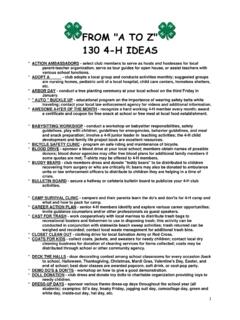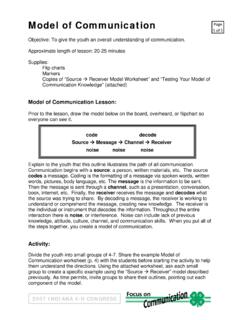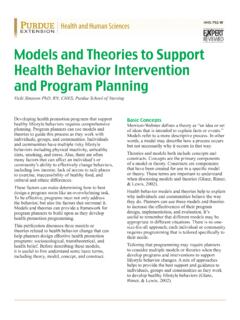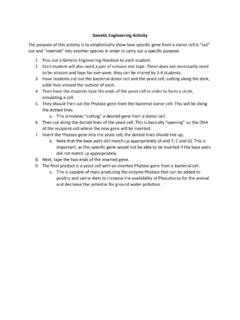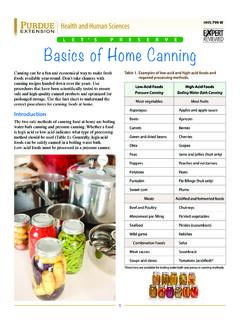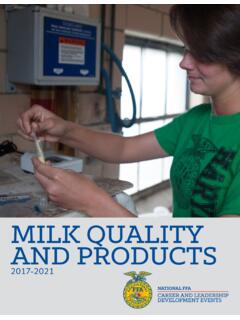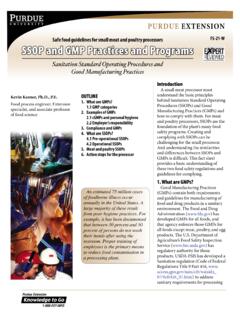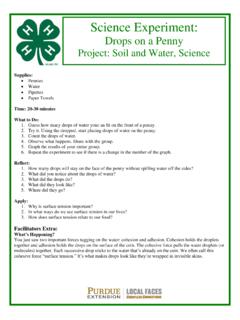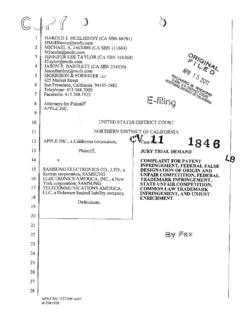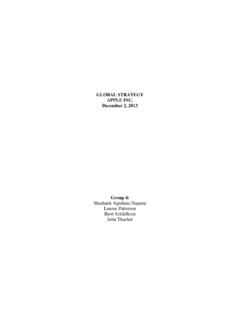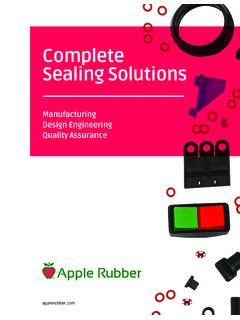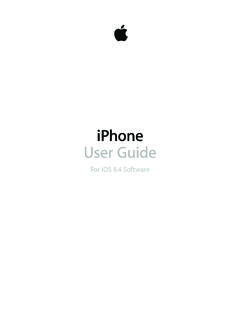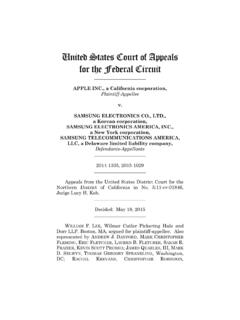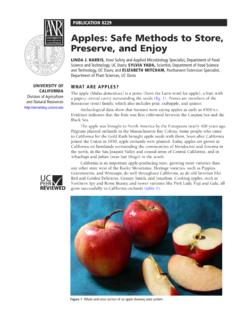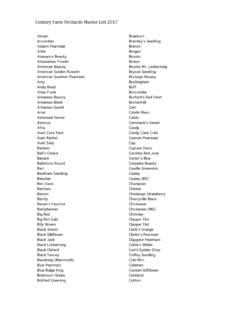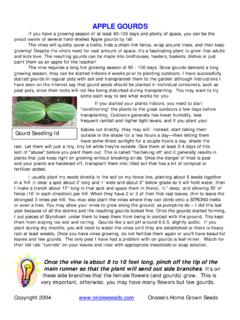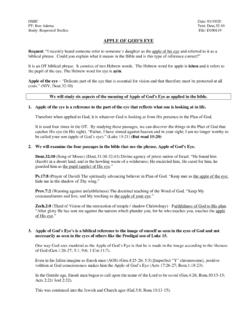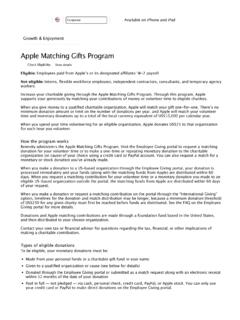Transcription of Science Experiment: The Brown Apple Project
1 Objectives: Participants will explore the chemical reaction behind Apple browning. Time to complete activity: 1 hour and 15 minutes Background: Fruit turns Brown when exposed to air because a reaction is happening when a cut piece of fruit is exposed to oxygen. This is calledenzymatic browning. The name enzymatic browning comes from the fact that an enzyme located in the fruit reacts with oxygen from the air to turn the fruit Brown . The chemical reaction can be simplified to: Polyphenol Oxidase + O2 Melanin ( Brown Color) Oxygen activates the compound polyphenol oxidase in the fruit to turn the fruit Brown .
2 Polyphenol oxidase is the enzyme. Definition of an enzyme: A substance produced by all living organisms that speed up a chemical reaction ( speeding up the browning of fruit). FUN FACT: Enzymes usually end with the suffix - ase. Materials: Fresh Apple slices Lemon juice Water Fruit Fresh (product used to prevent browning) Apple juice White vinegar Tongs Paper towels Paper plates Paper Bowls Clock or timer Set Up: There should be different areas set up for each group to perform the upcoming experiment .
3 Prior to starting the activity, talk about it! What happens when you cut into a piece of fruit and leave it on the counter? Fruit is an important part of our diets to keep us healthy, but who wants to eat a Brown , soft piece of fruit? Most people prefer a fresh, crisp Apple for instance over a mealy, mushy, and Brown Apple . What about you guys? Would you like to eat a Brown fruit? Can anyone think of a way to prevent this from happening? Allow the kids to openly brainstorm and consider o Various ideas (would you stick it in the to cut the fruit until you want to eat it etc.)
4 Science experiment : The Brown Apple Project Project : Food Science , Plant Science Introduce the experiment : This experiment involves dipping slices of Apple in a variety of substances. These include water, lemon juice, a special substance designed to preserve fruit, and Apple juice. The fruit will be observed over time (use our data sheet or make one of your own). Before beginning, ask participants what they think will happen? Which mixture will prevent browning the most? Have the participants write down their predictions.
5 Methods 1. Take out 3 bowls and put water, lemon juice, and vinegar in the bowls respectively. 2. Label a paper plate water. 3. Using the tongs dip Apple slice(s) into water for 30 seconds. 4. Take out the Apple slice(s) and place the paper plate labeled water. 5. Label a paper plate lemon juice. 6. Using tongs, place Apple slice(s) into the lemon juice for 30 seconds. 7. Take out the Apple slice(s) and place on the paper plate labeled lemon juice. (make sure to rinse the tongs aver each use to avoid cross contamination!)
6 8. Label a paper plate control. 9. Place Apple slice(s) on this plate without dipping them into anything. 10. Place on a paper plate labeled Fruit Fresh . 11. Sprinkle Apple slice(s) with Fruit Fresh . 12. Using tongs dip an Apple slice(s) into Apple juice for 30 seconds. 13. Place on a paper plate labeled Apple Juice. (remember to rinse the tongs!) 14. Using tongs, dip Apple slice(s) in vinegar for 30 seconds. 15. Place on a paper plate labeled Vinegar. 16. Record your observations every 10 minutes for three intervals.
7 Questions to discuss Tell me what you noticed happening in this experiment ? Why do you think this happened? How did the Apple slices change in their appearance? Which group had the least amount of browning? Which had the most? Have the youth openly discuss what they think happened. You could even go up to specific groups and hold up their apples for comparison to see if everyone had the same treatment with the least and most amount of browning. Ask youth to identify the ingredient that prevented the apples from turning Brown the most.
8 Why do they think that ingredient worked the best? What should happen? The treatment group of Apple slices that were dipped in the water should have some browning, but not as much as the control. This is due to the water restricting the amount of oxygen coming in contact with the fruit tissues. If there isn t as much oxygen available, then less reacts with PPO to convert the phenolic to melanin ( Brown coloring on the surface of fruits). The control was not treated with any solution and therefore the reaction was able to proceed and the fruit turned Brown .
9 The treatment group of Apple slices dipped in the lemon juice solution should inactivate the browning enzyme. Polyphenol oxidase (the enzyme) is pH dependent. The pH of lemon juice is between A lower pH means the substance is more acidic. The acid in lemon juice inactivates polyphenol oxidase to prevent browning. The treatment group of Apple slices sprinkled with Fruit Fresh should prevent browning. Fruit Fresh is a commercial product that contains vitamin C (also known as ascorbic acid). Ascorbic acid is naturally found in lemons.
10 The vitamin C should prevent the browning reaction from occurring. The treatment group of Apple slices dipped in Apple juice should prevent browning. Apple juice has a pH between Because Apple juice is less acidic than lemon juice, expect to find the Apple juice didn t prevent browning as well as the lemon juice. The treatment group of Apple slices dipped in the white vinegar should prevent browning as well. The vinegar has a pH between Vinegar should be similar to the lemon juice apples, however they could be slightly more Brown .
